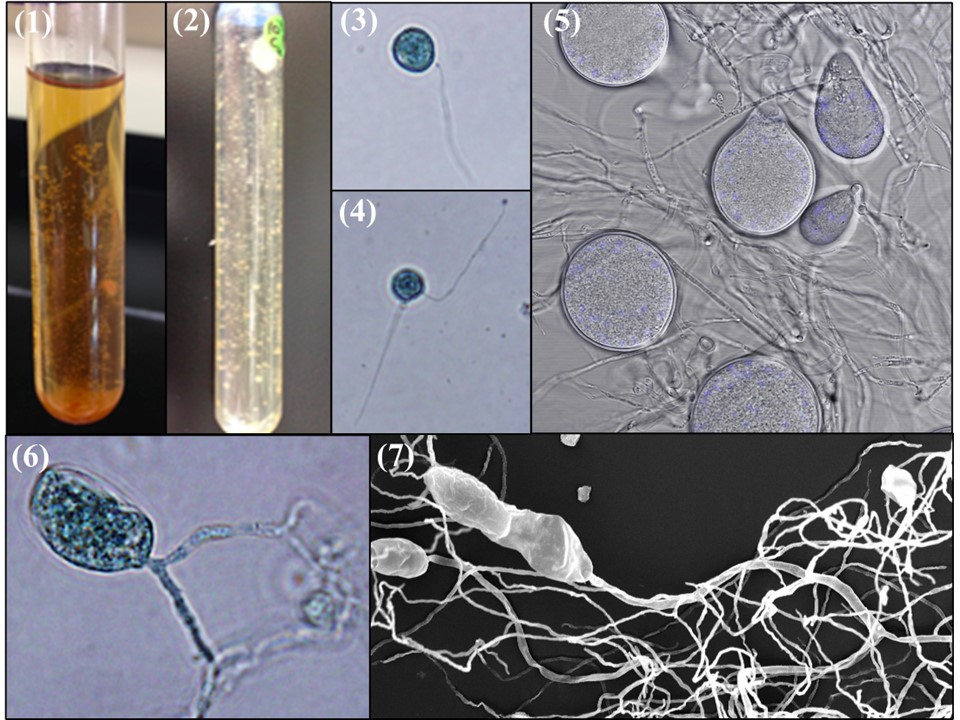Pecoramyces was the ninth anaerobic fungal genus to be described. However, at first the type strain was mistakenly identified as Orpinomyces. This was mainly due to the high sequence similarity of the ITS1 of Pecoramyces and Orpinomyces. A detailed morphological analysis subsequently confirmed its distinction from Orpinomyces. Pecoramyces has a monocentric thallus with monoflagellated zoospores, whilst Orpinomyces has a polycentric thallus and polyflagellated zoospores. Pecoramyces represents another clear example of the importance of both morphological and molecular characterization of anaerobic fungi to ensure their proper identification.
Pecoramyces was first isolated in 2009 but was not formally classified until 2017 by Hanafy et al. The genus name is derived from the Latin word for horned livestock. Pecora is also the infraorder, within the suborder Ruminantia, which comprises even-toed hoofed mammals with ruminant digestion. The Pecoramyces type species is called P. ruminantium.
Based on culture-independent surveys, Pecoramyces is widely distributed in ruminant and pseudoruminant foregut fermenters. However, it can also be present in some hindgut fermenters as a minor fraction of the total anaerobic fungal community. It is because of the widespread distribution of Pecoramyces in both ruminant and pseudoruminant herbivores that the type species was given the name P. ruminantium. To date, P. ruminantium has been isolated from fecal samples of cow, sheep, goat, oryx, and Nilgiri Tahr. The type strain (C1A) was isolated from an Angus steer.

Morphology
Images are shown above of the Pecoramyces ruminantium type strain C1A.
In liquid media, P. ruminantium produces a smooth biofilm-like fungal growth (Image 1). In agar roll tubes, it produces small pinpoint circular colonies (Image 2).
Microscopically, P. ruminantium produces mainly monoflagellated zoospores (Image 3), although bi-flagellated zoospores are occasionally produced (Image 4).
P. ruminantium has monocentric thalli (Image 5) with both endogenous (Image 6) and exogenous (Image 7) sporangia.
Sequence Information
There are currently two publicly available sequenced genomes for this genus. P. ruminantium strain C1A (previously published as Orpinomyces sp. C1A) and Pecoramyces sp. F1. For the latest update regarding publically available genomes for this genus, please see here.
For the P. ruminantium strain C1A that is pictured above, the LSU sequence is available in the NCBI database (accession number JN939127).
